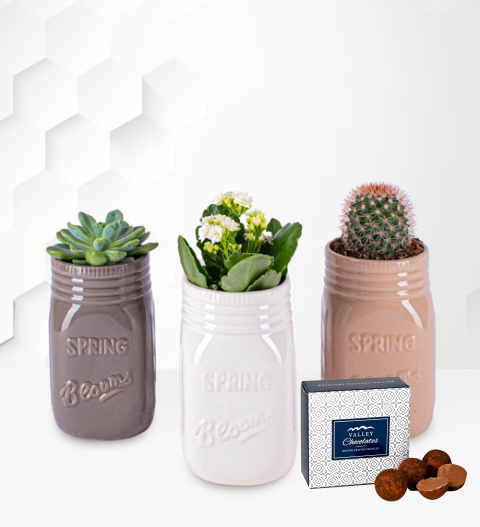
Container gardening tips and mistakes you should avoid
Container gardening is fantastic for homes of all sizes. Of course, there are some differences between this type of gardening and regular gardening. There are also some common mistakes that everyone needs to avoid. Here are some of the most important points to keep in mind.
Choose the right containers
While it’s true that container gardening allows for a fair amount of flexibility, you will need to take care when choosing the containers for each of your plants. Larger containers are best for most plants because it gives them room to grow and it also means that the soil will not dry out quite as quickly. There are some plants, like orchids, that enjoy more of a snug home. However, if you are planning on growing herbs, for instance, you should allow them to really sink their roots into the soil. It’s also a good idea to have various sizes on hand. You can start your plants in smaller pots and, as they grow, move them to larger ones.
Make sure there are holes
The drainage holes at the bottom of pots are there for a very good reason. Regular watering is important for container gardening. However, if the water does not have anywhere to go, it can cause serious damage to the roots of your plants. Just imagine sitting with your feet in water for days. After just a few minutes your skin starts to shrivel. It will not be long before even worse happens! The same is true for plant roots. They develop root rot and the plant dies if the soil is not properly drained.
Choosing the right soil
Garden soil and potting soil are two very different things. Potting soil allows the water to drain freely and it is nutrient rich. Productive container gardening comes from placing your plants in the perfect home and the right soil will certainly give them the ultimate advantage. The more nutrients they have at their disposal, the more they will thrive.
Don’t use fillers
A deep or large pot will require quite a bit of potting soil. Do not try to take any shortcuts by adding fillers like stones or rocks to the base. This will inhibit water flow and can block the drainage holes. If you want your plants to thrive, you should either fill the pots with potting soil or you can add some natural plant material to the base. If you have any flowers, leaves, stems and so on from a fresh bouquet or even from cleaning up your garden, you can add them to the very bottom. Just make sure that you don’t use weeds or any plants that have perished due to disease since this can affect the health of your developing plants.
Choose a home for each
While it might be tempting to place all your pots together when container gardening, this is not always ideal. The reason for this is because different plants have different needs in terms of air, lighting and watering. You will need to keep track of their water needs and make sure that they all receive the right amount of sunlight as well as the right type of sunlight in order to grow. If you place a plant that enjoys indirect sunlight in the direct sun, it will end up with burned leaves.
Group according to growth rates
If you plan on planting more than one plant in a single container, make sure that they grow at similar rates. If not, the one will quickly overtake the other. This means that the smaller plant may not receive enough light and the container will also end up looking rather odd with one large and one small plant. Container gardening, as you can tell, will require some research and planning for best results.
Watering schedule and techniques
Make sure that you only water your plants when necessary. If you overwater them, the soil will become too soggy and the roots will rot. On the other hand, if you underwater them, it will result in the plants drying out and this can also cause them to perish. Check the soil before you water. Not just the surface but about one inch deep. This is a good practice since your watering schedule will vary from season to season. It is also important to water the right way. While it might be tempting to water from above, this is not the most productive method. Instead, you should water from below so that the water actually penetrates the soil. Watering the leaves will mean that a lot of the water will not touch the soil and the plant can become rather dehydrated. In addition, even if you water early in the morning, the wet leaves can end up becoming burned due to the way in which water droplets magnify the rays of the sun.
Don’t neglect fertiliser
Container gardening means that you will need to take extra special care of the nutritional needs of your plants. Your plants are rooted in potting soil which is rich in nutrients but it will not always be this way. A good liquid fertiliser applied during the growing season of each plant will go a long way.
Finally, don’t forget that container gardening requires a fair bit of attention to detail. You will need to monitor your plants regularly and take note of any plants that are struggling. You should also inspect your plants for pests or disease. Any sign of such problems means that you should remove the affected plant or plants and either isolate or discard them.
